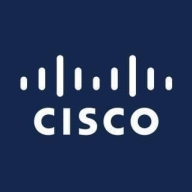

Meraki Dashboard and NinjaOne compete in the network management and IT operations market. Meraki seems to have the upper hand due to its extensive network features and cloud-based management, although NinjaOne's ease of use and remote operations appeal to smaller, less technical teams.
Features: Meraki Dashboard is known for presence analytics, Layer 7 filtering, and easy VPN connectivity. It supports multiple SSID configurations and offers robust integration features. Cloud-based management allows for a single pane of glass for visibility, security, and configuration. NinjaOne provides efficient remote management, custom script features, and patch management. It has strong monitoring capabilities supporting IT operations, particularly in mobile settings.
Room for Improvement: Meraki Dashboard users mention concerns about its expensive pricing, complex configuration, and limited VPN functionalities. They also seek enhancements in debugging access points and more intuitive navigation. NinjaOne could improve its reporting and integration with third-party tools while expanding automation processes to remain competitive against larger systems.
Ease of Deployment and Customer Service: Meraki can be deployed across various environments, including public cloud and on-premises, offering wide flexibility sometimes with a steep learning curve. Its customer service is generally positive, although response delays are noted. NinjaOne operates primarily in public cloud environments with streamlined support, quick response times, and user-friendly technical assistance, though integration with disparate environments requires improvement.
Pricing and ROI: Meraki Dashboard is priced at a premium, reflecting its comprehensive support and network management capabilities suitable for larger enterprises. It offers a range of licensing options, scaling costs based on devices and service levels. NinjaOne provides more competitive pricing through flexible subscription models reducing initial costs, scaling with managed devices. Both solutions reduce operational burdens for ROI, with Meraki noted for complex network needs.
NinjaOne enables significant time savings, reducing my workload by 40% to 50%, primarily due to remote management capabilities.
I have seen a return on investment with NinjaOne, specifically with fewer employees and less time spent on troubleshooting.
The support response time can be slow, sometimes taking up to fifteen hours.
When our site went down, Cisco's technical support was very responsive and effective, so I would rate them nine out of ten for their support.
They are instantly available for technical support from Meraki Dashboard.
Our experience with escalation supports, including auto escalation to third-level or engineering support, has been very positive.
The customer support at NinjaOne is excellent, rated ten out of ten.
I rate customer service and support for NinjaOne at seven out of ten due to slow response times.
I would rate the scalability of NinjaOne as ten out of ten.
The scalability of NinjaOne is good; we can add more as we grow.
The design suggests it is scalable.
We have not encountered any downtime related to the Meraki cloud feature in the last five years.
I would rate the stability a ten out of ten.
There is a need for price reductions in developing countries, as the cost of Meraki is quite high.
The cameras are not connected through Meraki, but all other devices are on Meraki networks.
It provides many insights out of the box without any need to search for them.
Security and reporting, including business intelligence tools, are adequate.
The inclusion of XENServer and Proxmox as virtual platforms in NinjaOne is currently missing.
One challenge I face with NinjaOne is that when remoting in, sometimes the end user has a resolution with very tiny text, making it necessary to zoom in to see what the other computer is displaying.
The cost of the Meraki solution is high, which may not be affordable for smaller companies, especially in developing countries.
If we involve a third-party vendor, the price will definitely go up.
The pricing for NinjaOne is appropriate for small companies.
NinjaOne is reasonably priced, particularly with the inclusion of TeamViewer, SentinelOne, and Bitdefender.
My experience with pricing, setup cost, and licensing for NinjaOne is fairly cheap and easy.
Meraki Dashboard offers an exceptional centralized management solution that allows easy updates and monitoring of various network features, including bandwidth usage and content filtering.
The most valuable feature for me is the cloud dashboard.
It summarizes everything in one place, which is very important for our organization.
The software's automation tools have solved critical deployment problems for small businesses.
A significant feature of NinjaOne is its remote access capability, which is essential for my clients’ home office usage.
Every month, every quarter, I see new features, and it is always evolving.
| Product | Market Share (%) |
|---|---|
| Meraki Dashboard | 1.1% |
| NinjaOne | 0.5% |
| Other | 98.4% |


| Company Size | Count |
|---|---|
| Small Business | 22 |
| Midsize Enterprise | 13 |
| Large Enterprise | 25 |
| Company Size | Count |
|---|---|
| Small Business | 17 |
| Midsize Enterprise | 2 |
| Large Enterprise | 1 |
Meraki Dashboard is a comprehensive cloud-based platform that offers centralized management and control for all Meraki networking and security products. It provides a user-friendly interface, allowing administrators to easily monitor and configure their network infrastructure from anywhere. With real-time visibility, troubleshooting becomes effortless, ensuring optimal performance and minimizing downtime.
The intuitive dashboard offers a holistic view of the network, enabling quick identification of potential issues and proactive measures. It simplifies network deployment and scaling, with zero-touch provisioning and automatic firmware updates. The robust security features include advanced threat protection, content filtering, and VPN connectivity.
Meraki Dashboard also offers powerful analytics and reporting capabilities, providing valuable insights into network usage, application performance, and user behavior. With its seamless integration and scalability,
Meraki Dashboard is the ideal solution for organizations of all sizes, ensuring efficient network management and enhanced productivity.
NinjaOne provides comprehensive remote monitoring, troubleshooting, and automation via a user-friendly web interface. With a robust mobile app and integration capabilities, it appeals to small businesses seeking cost-effective management solutions.
NinjaOne is designed to streamline IT operations through its remote monitoring, patch management, and automation capabilities. Its integration with Bitdefender and ongoing feature enhancements are valuable, although users express a desire for more third-party compatibility and smoother deployment processes. The platform's SLA system enhances performance tracking, while its continual development is a key attraction. Despite some calls for a more intuitive graphical interface and advanced reporting features, it remains an asset for managed service providers and businesses adapting to cloud-based environments.
What are the most important features?NinjaOne is widely employed across different sectors for server and workstation management, network infrastructure oversight, and client computer support. With its cloud-based framework, it supports managed service providers and businesses shifting to the cloud, ensuring seamless software deployment and improved asset management, making it integral to modern IT environments.
We monitor all Network Monitoring Software reviews to prevent fraudulent reviews and keep review quality high. We do not post reviews by company employees or direct competitors. We validate each review for authenticity via cross-reference with LinkedIn, and personal follow-up with the reviewer when necessary.